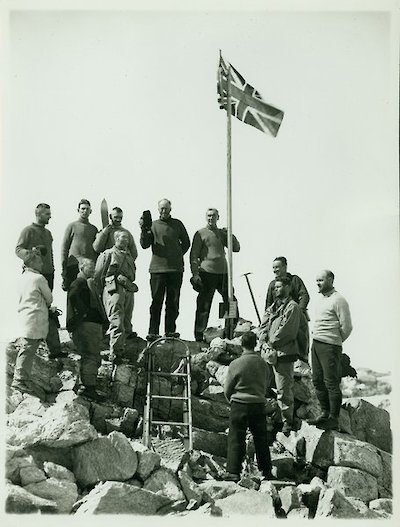Australian Antarctic Territory defined
With a revival in the whaling industries and increasing international interest in the Antarctic, Mawson was keen to affirm Australia’s interest in Antarctica. He proposed a two-year research expedition working eastwards along the Antarctic coast south of Australia, from Enderby Land to the Ross Sea, surveying the coast with the use of aircraft. With support from three governments the British, Australian and New Zealand Antarctic Research Expedition (BANZARE) was formed under Mawson’s command and set sail for the Antarctic in October 1929.
In two summer voyages Discovery and the expedition aircraft traversed the whole coastline from 45deg.E to 160deg.E and in the process defined the limits of what was to become Australian Antarctic Territory (AAT). Three new landings were made and aircraft flights discovered the BANZARE Coast and Princess Elizabeth Land. The expedition also generated scientific results that were so voluminous that reports were still being published three decades later.
To capitalise on the achievements of BANZARE, plans turned towards the establishment of permanent Antarctic stations which could support further exploratory work as well as conduct meteorological and other studies. Wilkins’ ship Wyatt Earp was purchased by the government to support these proposals, but progress in Australian exploration had to be deferred with the outbreak of the Second World War.

